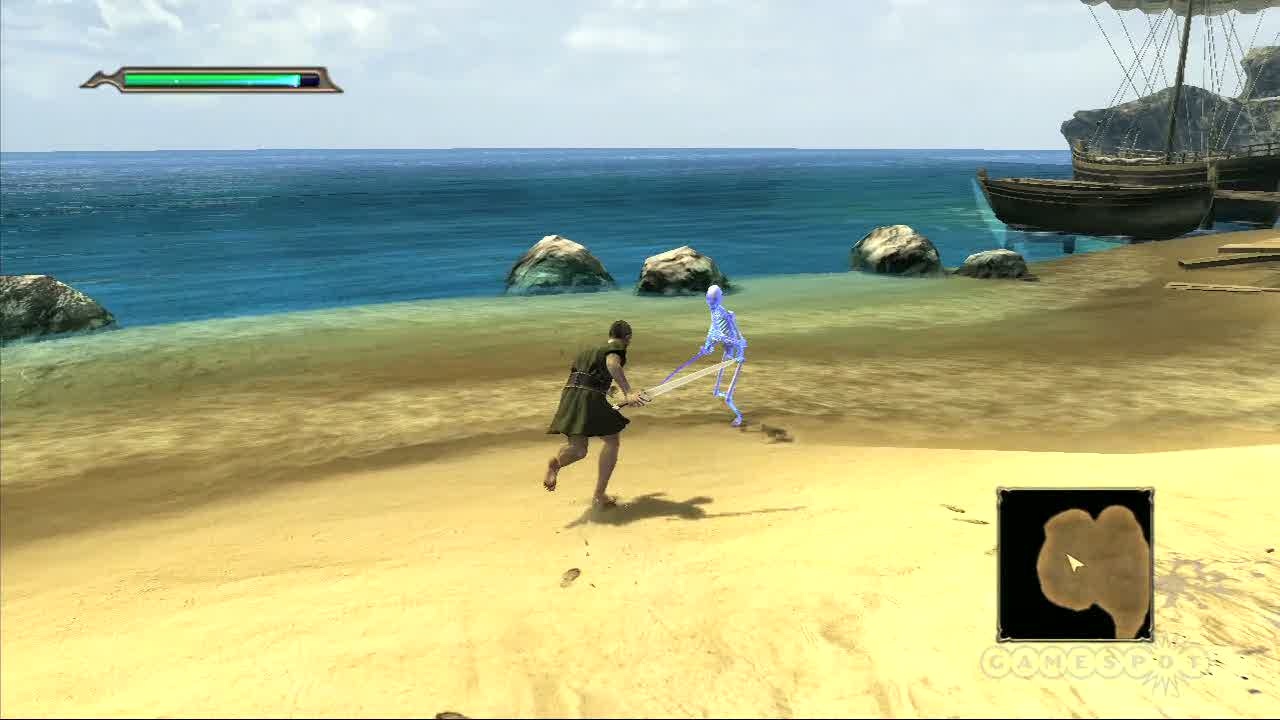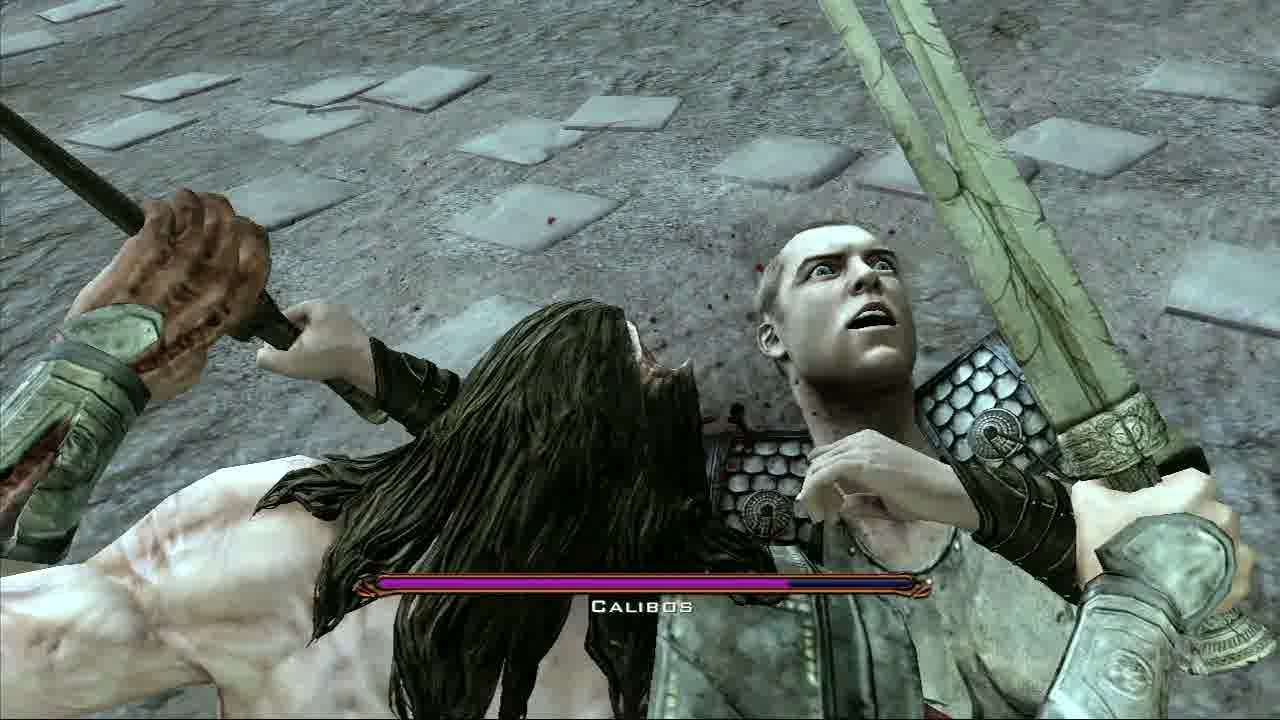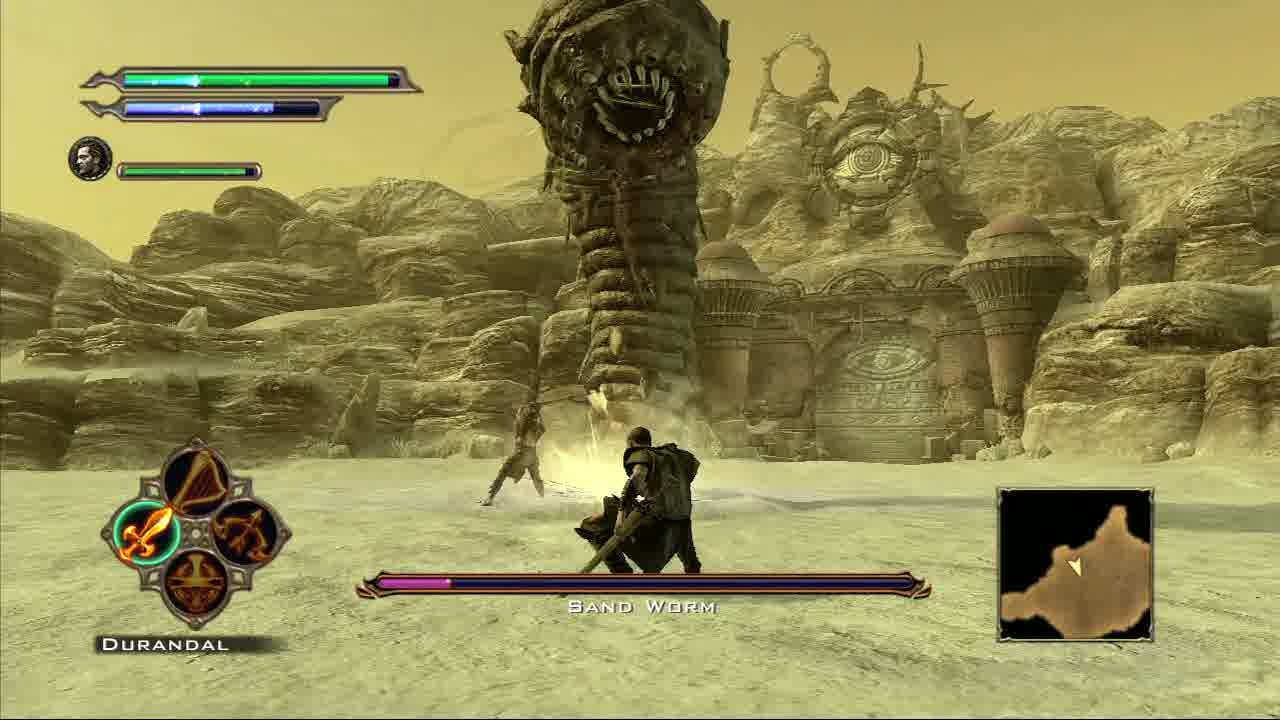Like the miles of mire that play backdrop to Perseus' quest to overthrow the rulers of Olympus, Clash of the Titans is a dull and haggard experience. A rich tapestry of myth is pushed aside to make room for repetitious bloodletting, laborious item collection, and overcomplicated and unrewarding weapon upgrades. The result is a game punished by its own unpruned ideas that quickly devolves into familiar but uninspired hack-and-slash gameplay. This is an uphill slog and another poor game that attempts to ride the leather loincloth coattails of its original source.
There's a lot of content in Clash of the Titans, but the 20 hours it takes to reach the conclusion of this derivative adventure are far too repetitive to hold your attention for very long. The game offers a mostly faithful adaptation of the movie plot and plonks you in the sandals of Perseus, Zeus's mortal son, who is caught in the centre of some nasty infighting between the gods. Baying for blood, you seek revenge for the murder of your adopted family by the lord of the underworld, Hades, who is intent on teaching humanity a lesson in submissiveness.
It isn't all smooth sailing for our Greek Hero, and you progress through the story by cutting up differing types of fiends. Light and heavy attacks are your defensive bread and butter, while a held button press releases special attacks like axe swings or a flurry of blades with your selected weapon. Waves of cloned enemies including skeletons, ethereal beings, giant floating eyeballs, and shambling monstrosities all block your path. Boss fights pit you against centaurs, chimeras, a serpent of the dead, cyclopes, and double-headed demon dogs. These encounters are the highlights of an otherwise unremarkable experience, and help to break up the monotony, but they're often toppled all too quickly. As a result, rather than dragging you into the world they inhabit, the frequency of these simple boss encounters feels like stuffing thrown in to keep the game timer ticking by tossing extra hurdles in your way to the prize.
Fights almost always involve multiple attackers, making the best way to survive to pick one, or if they're weak enough, a few targets, and take them down before switching your attention. Holding the left trigger usually targets the closest enemy (but certainly isn't foolproof) and allows you to monitor the damage being dealt by watching for colour changes to your enemy's character model. Red means they're not ready for you to try to suck out the energy they contain to power your special attacks, while dark and light blue denotes that they are closer to death, and you'll be rewarded with more energy if you zap. This same colour-based status change system is used to initiate the game's plethora of "sub weapon seize" quick-time events, which are used for everything from stealing weapons to dealing killing blows during boss fights.
Problems begin once you realise there's no way to switch targets manually in lock mode. Your only option is to release the trigger, rotate the camera to the next foe, and hope you don't snap back to the previous enemy. Knocking them into the air with a swipe of your blade usually maintains your lock on them, but sometimes doing so removes your ability to see their colour status. This then forces you to release and re-target them to determine when you can steal their souls. Damage status is visible only while targeting, and the game camera is prone to freak out when locking on to foes perched above or below eye level. It's also not uncommon for the camera to obscure targets behind environmental objects, leaving you open to attacks from behind as you attempt to wrest back control while framing the action.

Killing a target with a quick-time event rewards you with "gifts," such as bones, iron, and gems which can be used to upgrade your weapons. While each weapon has unique abilities that require items of differing rarities to be unlocked, the upgrades don't offer any new gameplay beyond basic slashing. Even once you have maxed-out your armoury, you still endure the same stale light and heavy button dance to mow down monsters.
A veritable buffet of torture devices is available for dispatching your enemies, spanning everything from bone scythes, fiery magical powers, and ornate bows, to freshly plucked scorpion tails. Only four weapons can be equipped at any time, and you use the D pad to switch between them on the fly. Menu navigation is long-winded and needlessly complicated, requiring multiple submenus and scrolls to make changes and equip items. This clumsy handling becomes a major source of pain late in the game when certain enemy objects can be destroyed only with particular weapons. Trial and error is the only way to find the appropriate tool for the job, and often the weapon or item is used only once for its specific need before being returned to your weapons cache. Moments like these drag you out of the action as you're forced to fumble through lists of objects to find the one that destroy an object to stop monsters from endlessly spawning.
You don't ever need to strain your brain, since puzzle-solving is not part of Clash of the Titan's repertoire. Furthermore, the very notion of quest variety is dashed from the outset. Opportunities to expand on the hack-and-slash formula are thrown by the wayside when even quests to find food or locate plant seeds are solely combat focused. Insult is added to injury when Perseus, a fisherman, is presented with the chance to apply his craft to locate food, but instead finds a dead fish at the end of a worn path after another bloody showdown.

Quest text is frequently vague and in places nonexistent, forcing you to bumble around blindly until you work out what it is the game wants you to do. Locked into areas, waves of enemies spawn with no explanation, and you're left to wonder what you need to do to make them stop. Environments are regularly repeated, requiring you to revisit the same swamp, sand, or snow zone several times over to find an item or kill a specific target. While the game stops short of asking you to backtrack to the quest giver in most cases, exploration is more of a by-product of poor instruction than a desire to discover, and you often find yourself face-to-face with dead ends. Since multiple quests in the same area can't be accepted simultaneously, you often return multiple times for the next mission down the chain.
If you're sadistic enough, Clash of the Titans lets you drag a friend along for the ride--but only when it wants you to. Certain quests pair you with an AI companion, and some can be controlled by a second player. Not all team missions support cooperative play, and the ones that do see the two of you fighting alongside each other as you both attempt to control the camera and inevitably bump up against the edge of the screen waving weapons at targets just out of reach.
Challenge mode is comprised of individual missions that you have already completed during the single-player campaign, but these missions aren't any more fun the second time around, even if you add a friend to the mix. A second player can take on the role of one of a handful of minor characters, but they only ever end up playing a support role. Perseus still does the majority of the heavy lifting, and having an extra player on screen brings with it a raft of new problems. For example, when player one uses a bow, it stops player two from being able to move or attack. Likewise, execution animations have been created only for Perseus, meaning that regardless of which player is performing the finishing move, the game will only ever show Perseus dealing the fatal strike.
Inconsistent audio and visuals further add to the laundry list of problems in Clash of the Titans. Voice acting wavers between hammy and wooden, soundtrack audio fits the game's tone, but is repeated far too often, and characters regularly pivot on the spot to turn and walk away like they're guided by rails.

If you can bring yourself to trudge on to the end, you're rewarded with challenge missions. These include timed versions of some missions you completed during the story, killing a certain number of monsters before a timer runs out, besting guards in a competition to see who can bag the most skeletons, or thinning the local frog and cockatrice populations. Completing these allows you to replay the boss battles from the story, and if you have the stamina to go on, you can gain access to the Story mode missions a la carte. Ultimately, your only rewards are more gems and resources that can be used to further upgrade the weapons you're probably not using.
Clash of the Titans is a predictable, derivative experience. While the promise of unique and customisable weapon loadouts and a rich story based on mythological lore holds plenty of potential, the lacklustre delivery and tedious campaign contained within certainly won't have you lining up for another tour. Your time, money, and energy would be better spent playing one of the many games Clash of the Titans unsuccessfully tries to ape.